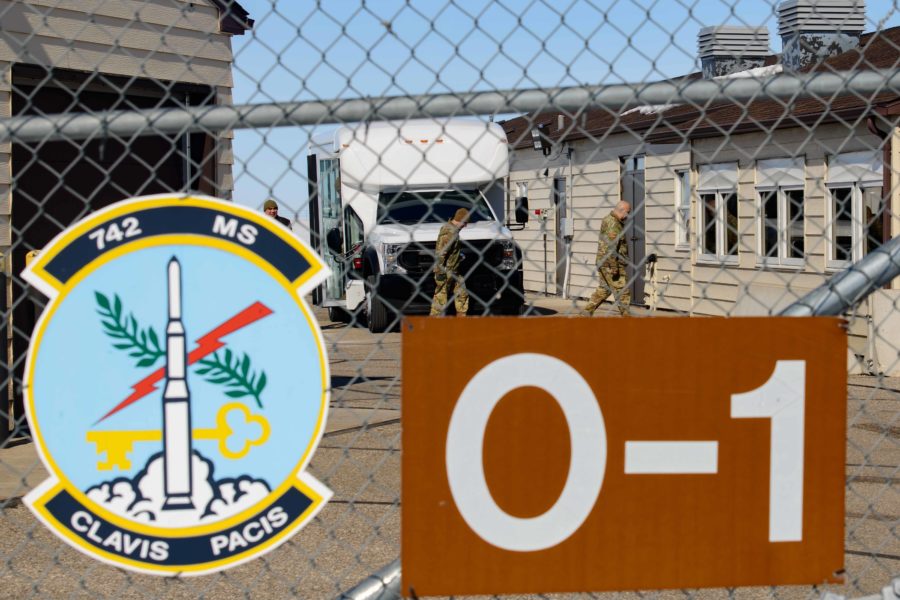As part of its broad study of cancer risks at the intercontinental ballistic missile bases, the Air Force is conducting a more focused, detailed investigation of environmental hazards at the installations.
“Two separate efforts are planned in the future,” Col. Tory W. Woodard, the director of the U.S. Air Force School of Aerospace Medicine (USAFSAM), which designed the study, recently told Air & Space Forces Magazine.
The first is an epidemiology study to look at cancer rates in missileer and associated career fields. The second, he added, is “dedicated environmental hazard sampling to assess the work areas.”
Concern about cancer rates at ICBM bases from the veteran community spurred the Air Force to launch its much-scrutinized Missile Community Cancer Study.
Members of the study team conducted initial visits to the ICBM bases in February and March to understand what they should look for and where. The Air Force’s three ICBM bases are Malmstrom Air Force Base, Mont., F.E. Warren Air Force Base, Wyo., and Minot Air Force Base, N.D. The ICBM silos themselves are spread out over vast fields that reach into five states.
The Air Force has studied the issue before, including a study in 2001 at Malmstrom. This time, the service is planning a more exhaustive look.
There is an improved understanding of the environment and factors that can affect the issue, as well as better technology and “access both to personnel and to the actual silos and launch facilities and launch control centers,” Col. Robert Peltzer, a senior medical official at Air Force Global Strike Command, said in a recent interview. “I don’t think the 2001 folks had that same level of ability to get to the spots that they really need to look at.”
The issue is not just a concern for veterans. The service is also trying to understand the potential hazards for personnel currently stationed at the facility.
“When they got back, they looked at, OK, here’s all the hazards we identified,” Peltzer said of the initial visits. “Let’s research and find out what equipment is out there today that can detect these things.”
Among the potential dangers, the study teams found stickers indicating the presence of polychlorinated biphenyls—commonly known as PCBs—which are present in older electronics and should have been removed long ago.
“PCBs have been demonstrated to cause a variety of adverse health effects,” according to the Environmental Protection Agency, which notes “the data strongly suggest that PCBs are probable human carcinogens.”
PCB production was banned in 1979, but ICBM facilities are decades old. An AFGSC source familiar with the study said the Air Force began phasing out PCBs at ICBM facilities in the 1980s, but it is not clear if the process was fully completed. The person said technical orders were issued for the removal of PCBs which were marked as complete, and technical orders might not have included removing the signage. But signs denoting the presence of PCBs are present at all three active ICBM bases and the Air Force is investigating.
“We’re not going to take that the stickers are inaccurate or accurate,” Peltzer said. “We’re going to make sure and validate one way or the other—are there PCBs down there?”
PCBs are not the only hazard. Another major concern for missileers is radon exposure and water contamination. Radon is a radioactive gas that comes from bedrock and soil, and missile facilities are buried underground with personnel living in cramped quarters on 24-48 hour shifts.
“There’ll be looking for air sampling, air intake, water—both above ground and below ground,” Peltzer said.
The U.S. government does not own the land around many missile facilities where some harmful materials may be present.
“We’re going to test the water and soil at different times for environmental changes,” Peltzer said, noting the schedule for doing agriculture work, as well as temperature changes, could affect the level of risk.
The team will also keep sampling equipment, which had to get special clearance to be used in ICBM facilities, on the bases to continue monitoring well into the future.
That’s in keeping with researchers comprehensive approach of “doing it, training, and then setting up the long-term enduring part of this to make sure that we don’t have anything in the future that we weren’t aware of,” Peltzer said.
He said the Air Force would not let the classified nature of ICBM operations impede the investigation.
“One of the things that we’ve ensured is that our environmental folks do have the level of clearance to go down in those areas,” Peltzer said. “They don’t have the need to know what the rest of the stuff is going on. But they can collect information or take samples and then leave. So those are things that have changed over the years.”
